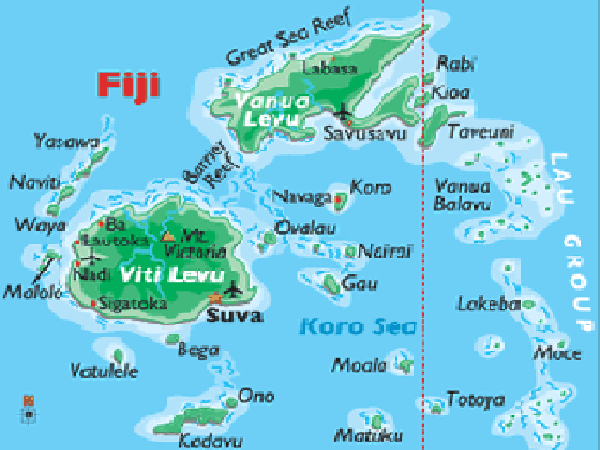

Our first stop was this tropical paradise made up of 330 islands--two thirds of which are uninhabited. Fiji has a population of about 880,000, of which 330,000 are indigenous to the islands. We stayed on Viti Levu, called the big island-about the size of New Jersey, where seventy percent live. The red line is the International Dateline--stand on it and you can be in both yesterday and today at the same time. At the current exchange rate of one Fiji dollar equaling 45 cents, it seemed like we were living in yesteryear!
 |
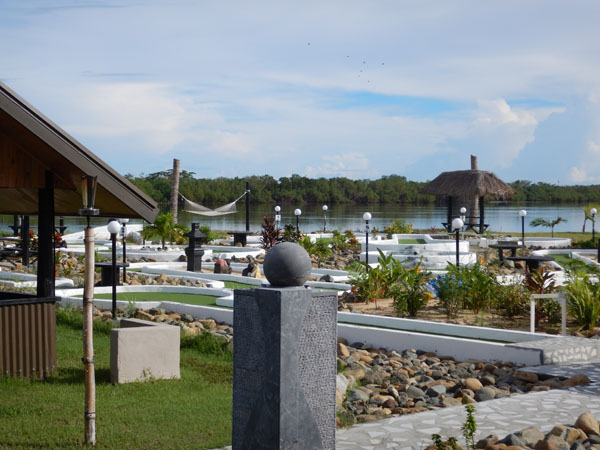 |
| This bungalow at the Relax Resort Fiji was our home for nearly a week. Being on the 18 parallel south of the equator, the AC ran day and night. We don't know if it was the heat or the jet lag, but we slept more slept more than we did in years. | The resort was small in comparison to the all-inclusives that dot the landscape of Fiji, but this is what we wanted to get a taste of the culture and see the beauty of the island. It sits along the back waters of the Pacific Ocean. |
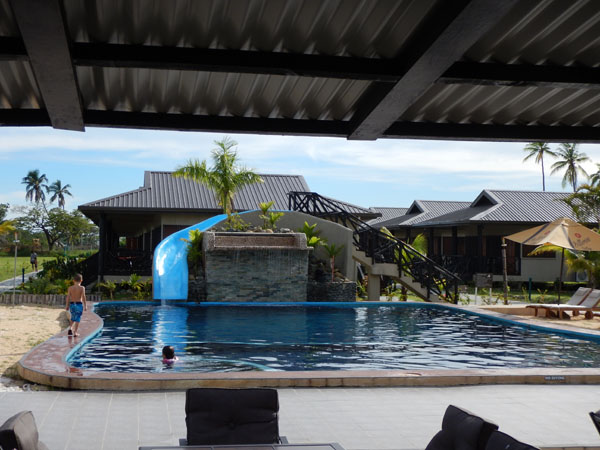 |
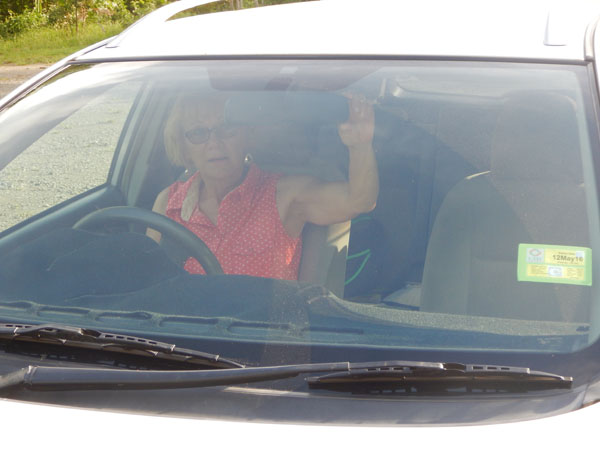 |
| The swimming pool was a nice break from the heat as well as the cold temperature of our room. Fiji is multi-cultural, multi-ethnic and multi-racial. The locals were beyond friendly. We did not walk past one person without hearing them say BULA, which is Fijian for welcome. | We rented a car to get out and about. Thanks to the British Empire, we had to learn how to drive on the wrong (which they call the left) side of the road. On the upside, they left English as the primary language of Fiji. Here Glorine is adjusting the mirrors and ready for a test drive. |
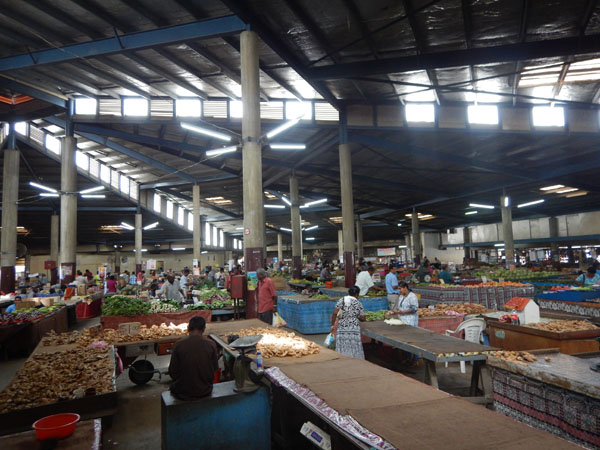 |
 |
| Our first stop was in Lautoka, Fiji's second largest city. Sitting in the heart of the country's sugar cane region, it is known as Sugar City. We toured an awesome market with fruits and veggies--many we had never seen before. | About 40 percent of the population lives in 12 urban cities, the remainder live in villages, such as this one. All have electricity and running water but not much more. Some have multiple generational families living in these tiny quarters. |
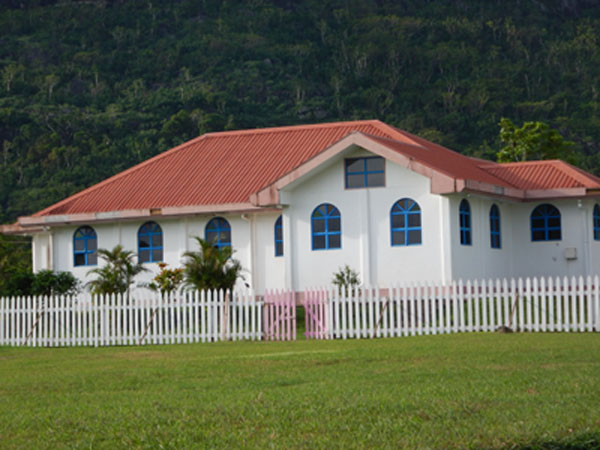 |
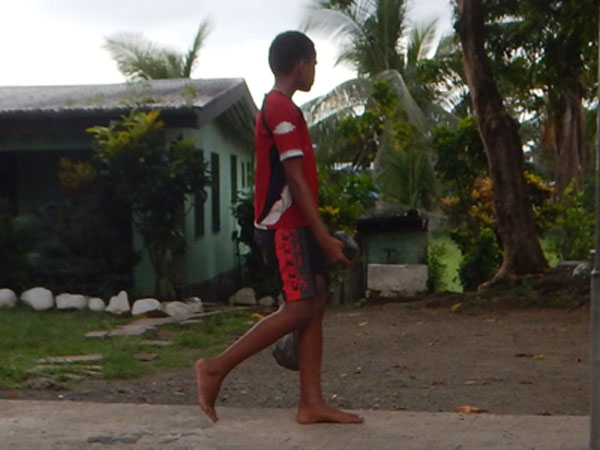 |
| Each village has a church, which is the center piece of the community. This Methodist Church is modest in comparison to some we saw. | Walking barefoot is a way of life for many Fijians. Not because they can't afford shoes (which some can't) but it is what they choose. |
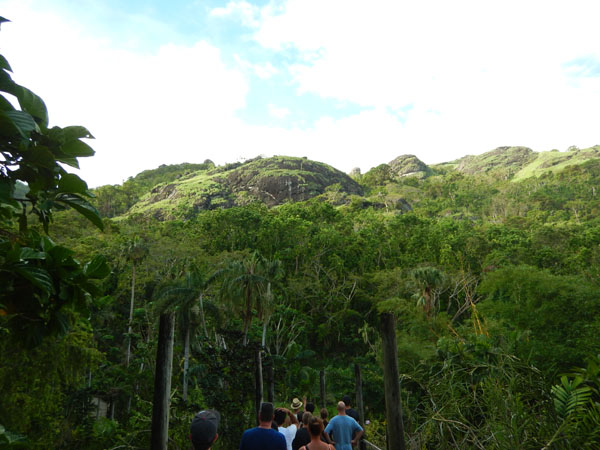 |
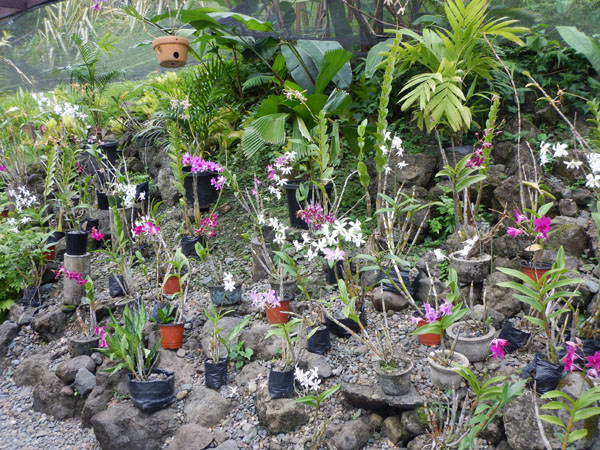 |
| This is the Garden of the Sleeping Giant--see the forehead, an eye lash, a nose and mouth. It is a popular tourist attraction thanks to the benevolence of Raymond Burr, who played in Perry Mason and Ironside. | This was his secret hide away where he and his partner transformed this mountain side into a nature and flower garden. It is said that they produce over 1,500 hybrid orchids, one named after Mason's secretary, Della Street. |
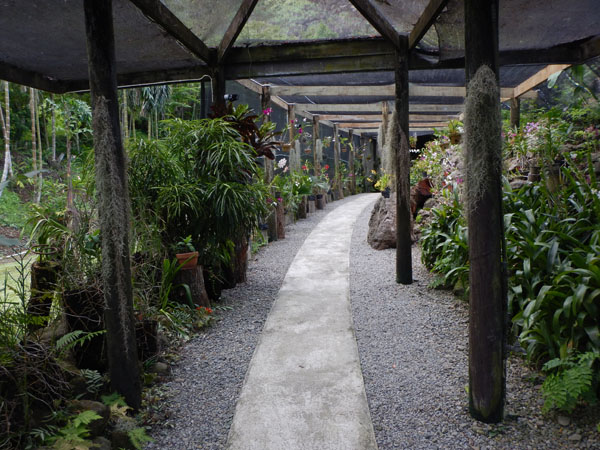 |
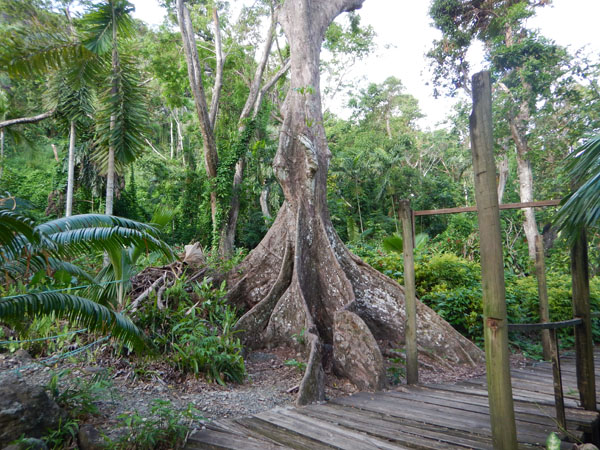 |
| The garden is about 15 acres with concrete and elevated wooden walkways to view both flowers and nature. It has huge greenhouses where future planting start out. | As we walked the garden, we both were captivated by this huge tree, with its unique root structure. Later on our trip, we saw many more trees similar to this one. |
 |
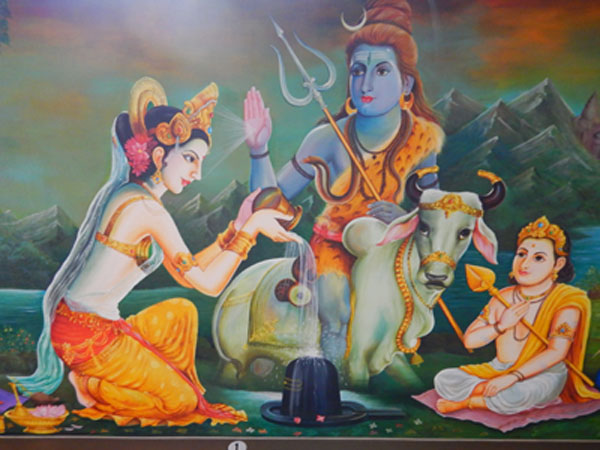 |
| Fiji is both multi-racial and multi-cultural, with 60 percent Christian, 10 percent Muslim and 30 percent Hindu. When we visited this Hindu temple, we had to leave our shoes at the entrance and because we were wearing shorts, we had to wear a sarong. | The ceilings of the temple were covered with paintings each telling stories of their way of life. It is the oldest religion, dating back to 500 BCE and has over one billion believers making it the third largest religion in the world. |
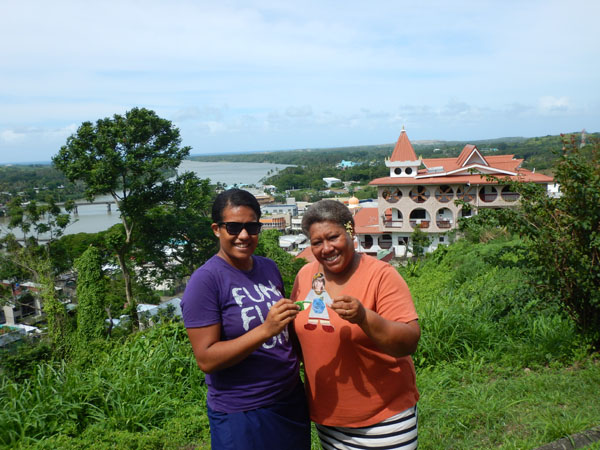 |
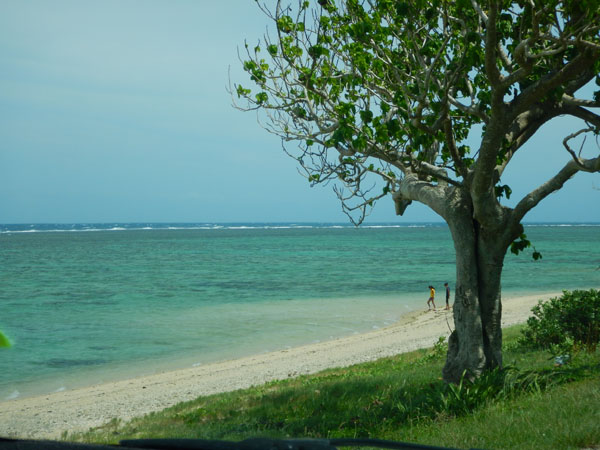 |
| As we drove through a small village outside of Sigatoka, we met Andie and Tammie. After a brief visit, we found they were heading to the city, so we gave them a ride. In return, they gave us a tour of the city, including this great view. Here they are holding Flat Sierra, who we had taken along on our journey. | Fiji has two highways--the Kings Highway along the northern side and the Queens Highway along the southern coast. Each begins in Nadi, home of the international airport and ends in the nation's capital, Savu. The southern coast is also known as the Coral Coast, which has a shelf extending out about 1/4 mile, before it drops deep into the sea. |
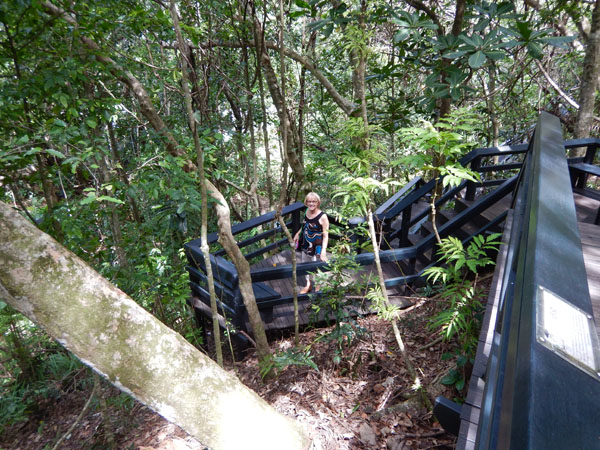 |
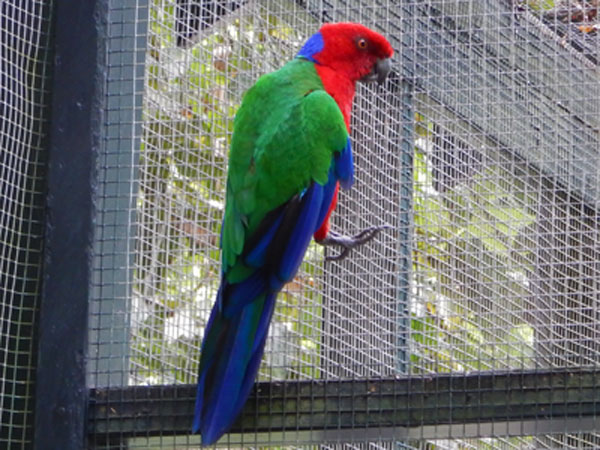 |
| We toured the Kula Eco Park, the countries only wildlife park and a showcase of its birds, reptiles and insects. Here we are on a mile-long elevated walkway. One could almost see Tarzan swinging from these vines. | The walkway went into and through huge cages filled with native birds. Here we got to see a Kadavu parrot up close and personal. It is one of Fiji's most distinctive shinning parrot. |
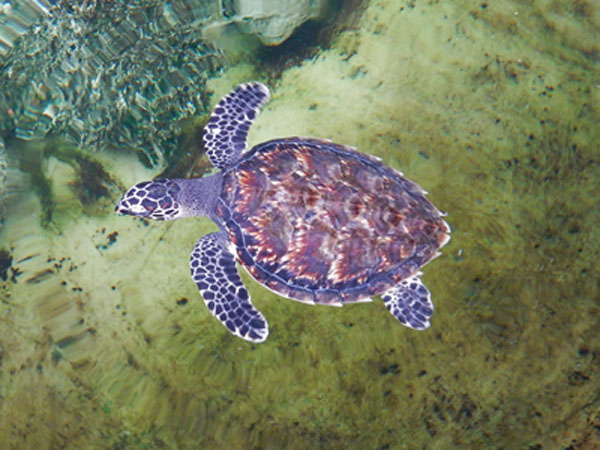 |
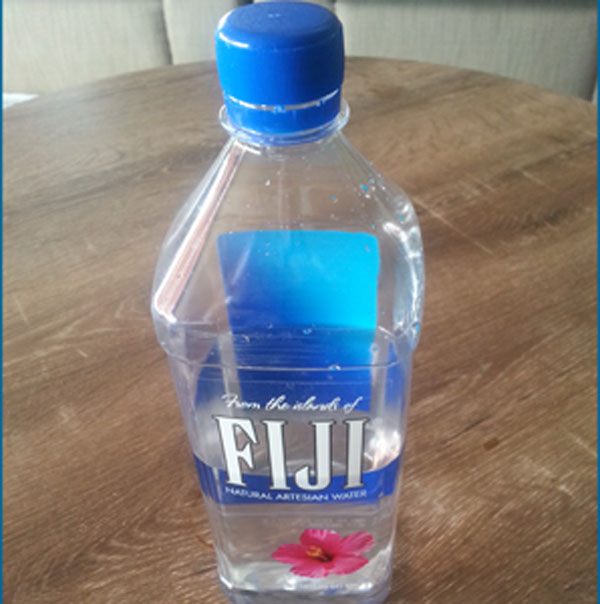 |
| The Eco Park included exhibits of coral, tropical fish, and these sea turtles swimming in a huge tank of sea water. | FIJI Water is billed as the Earth's Finest Water and is the number one imported bottled water in the USA. It comes from an artesian aquifer located in the interior of the island. |
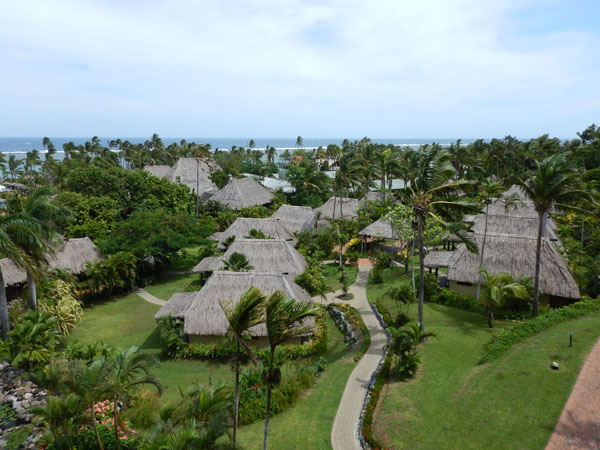 |
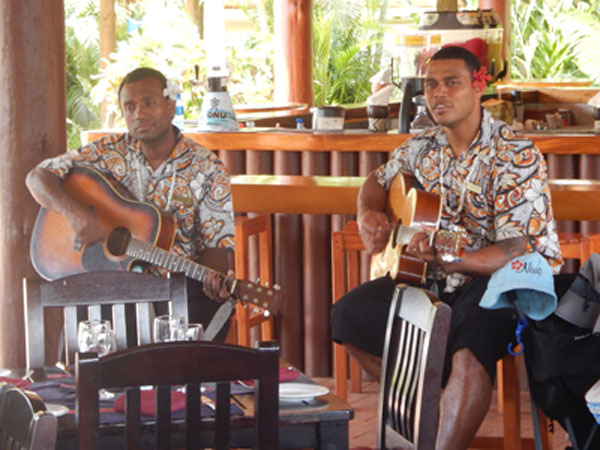 |
| Outriggers Fiji Beach Resort, near the Eco Park, is one of a dozen resorts along the Coral Coast that caters to families. It was filled with New Zealanders and Australians on Easter break. | While we shared a Chicken Wrap, we were entertained by two Fijian musicians playing Polynesian music mixed with modern folk music which they sang in both English and Fijian. |
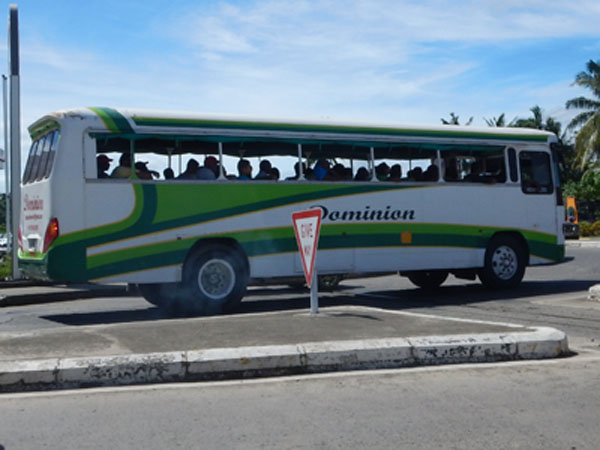 |
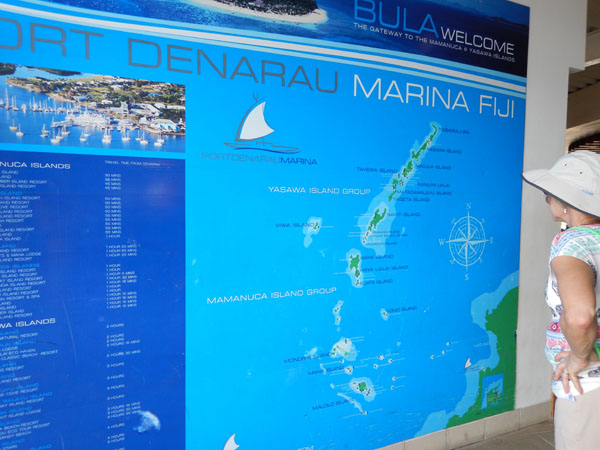 |
| Many Fijians do not own or drive cars, which means carpooling, hitching a ride or riding the bus. This is one of many that were filled to the brim and fully air conditioned--no windows. | The heart of upscale Fijian tourism is Port Denarau, 20 minutes from the airport. It is home to seven international resorts (Sheraton, Westin, etc.) and a launch point to some 40 resorts on the outer islands. |
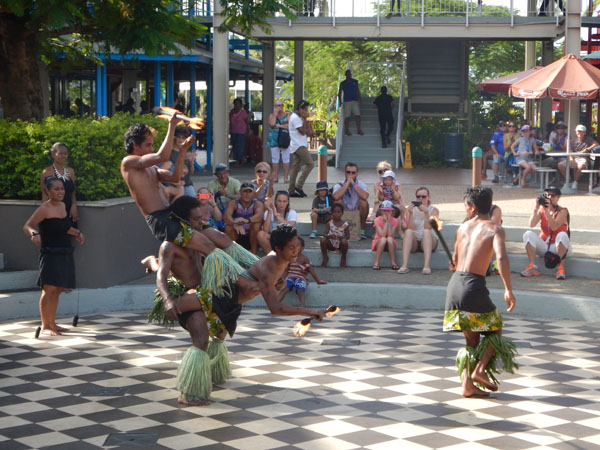 |
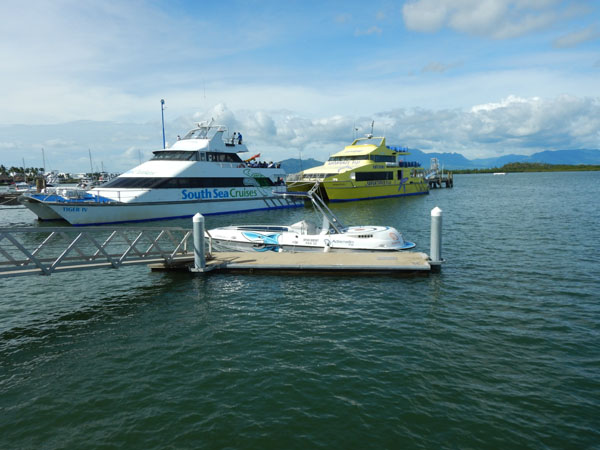 |
| With all these tourist, the Port is a hub of entertainment, from this fire dancers to classical rock and roll. | These were a few of the many ships docked and ready for the next batch of tourists to leave for the island resorts. |
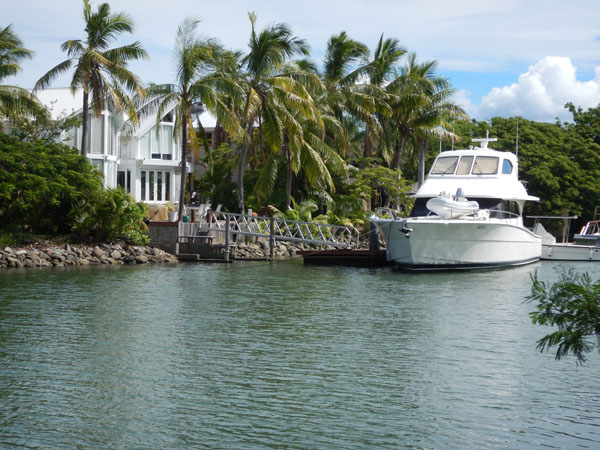 |
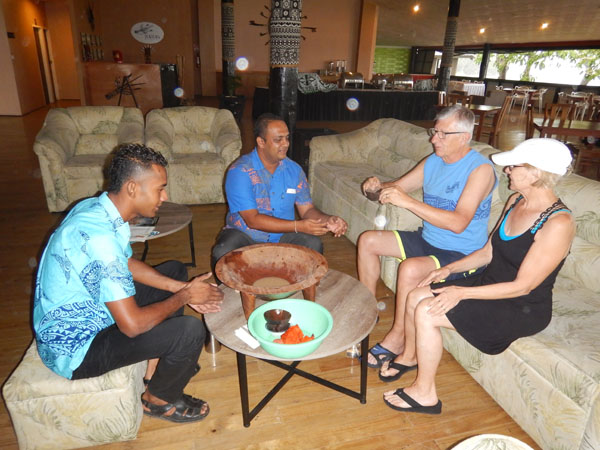 |
| The port is also home to some pretty exclusive homes with private docks for their fancy yachts. Fiji is not only for the haves and the have not's, but also for these have mores. | Our final night in Fiji, the resort staff walked us through a Fijian Kava ceremony. Kava comes from the root of a Kava plant. It tastes awful, but has a very relaxing and calming effect. |
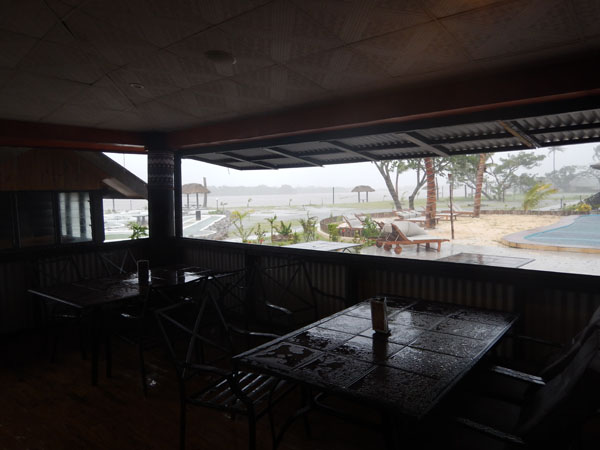 |
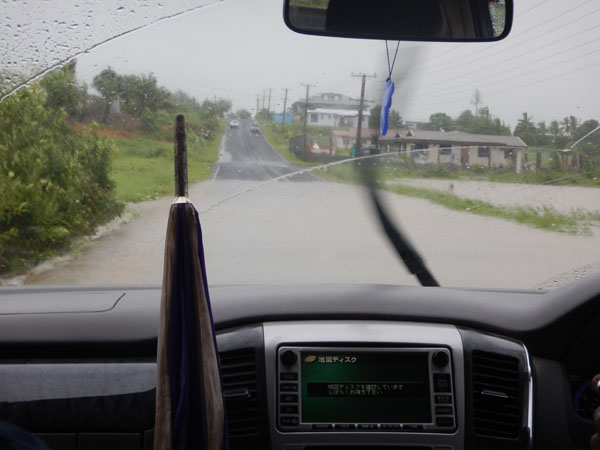 |
| On our last day, we woke up to a tropical depression that was later upgraded to Cyclone Xena. Everything at the resort was boarded up. While we knew our flight was delayed twice, the staff knew the flood waters were coming and that if we didn't leave now, we would be staying in Fiji several more days. | The shuttle to the airport was an experience. Here we are driving a few miles an hour through a flooded roadway. On one street, we had to back up and use another road. We finally arrived at the airport where we waited through more delays. Our plane was one of the last ones off the island before the storm hit. |
Our impression of Fiji: We thought there were a lot of similarities with Mexico.
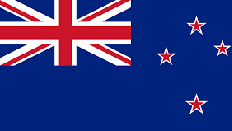 |
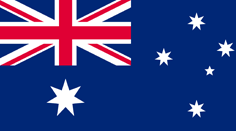 |